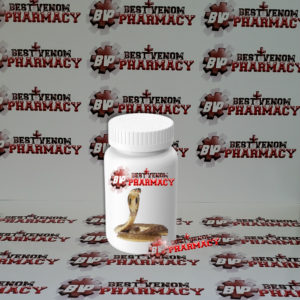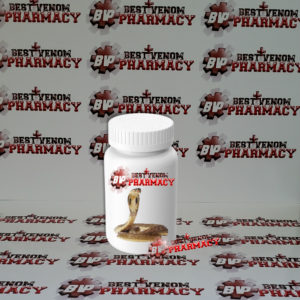BUY JARARACA PIT VIPER SNAKE VENOM
BUY JARARACA PIT VIPER SNAKE VENOM
€ 1,150.00 – € 7,300.00
BOTHROPS JARARACA VENOM ( SOUTH AMERICA PIT VIPER)
Description
BUY JARARACA PIT VIPER SNAKE VENOM
Buy Jararaca Pit Viper Snake Venom for sale. BOTHROPS JARARACA VENOM, If you’ve just been bitten by a venomous snake and your flesh is starting to rot and you can’t breathe, you may not be in the mood to hear how beautiful snake venom can be. But from a safe distance, it really is a marvel to behold.
Snake venom is a blend of molecules, many of which are exquisitely adapted for wreaking havoc. Some are enzymes that slice muscles apart. Some grab onto proteins that normally form clots, so that a snake’s victim can’t stop bleeding. Many snake venoms attack the nervous system with molecular precision that’s so good that neuroscientists have snakes to thank for some of their biggest discoveries.
In the 1950s, two researchers in Taiwan–CY Lee and CC Chang–decided to study the venom of the banded krait. A bite from the snake, native to Taiwan, caused paralysis and shallow breathing–suggesting to the scientists that the snake’s venom must interfere in an interesting way with the nervous system’s control of muscles.
Nerves trigger muscles to contract by releasing the neurotransmitter acetylcholine. At first Lee and Chang assumed that the snake venom must cut acetylcholine apart, but they found it had no effect. Instead, they discovered, the banded krait venom prevented neurons from responding to acetylcholine and from releasing their own. These two changes were caused by two different proteins in the venom of the banded krait, which Lee and Chang dubbed α-bungarotoxin and β-bungarotoxin.
Bothrops jararaca Venom ( Brazilian pit viper) is a species of viper endemic to South America and is an important cause of snakebite in that region.
Bothrops jararaca Venom ( Brazilian pit viper) is the best-known venomous snake in the wealthy and heavily populated areas of south-eastern Brazil, where it was responsible for 52% (3,446 cases) of snakebites between 1902 and 1945, with a 0.7% fatality rate (25 deaths).
Jararaca Venom ( Brazilian pit viper) from the snake bite causes local swelling, petechiae (small red or purple spots caused by bleeding into the skin), bruising and blistering but also bleeding of the gums, haemorrhage and incoagulable blood. These symptoms can potentially be fatal.
Buy Jararaca Pit Viper Snake Venom for sale. BOTHROPS JARARACA VENOM, If you’ve just been bitten by a venomous snake and your flesh is starting to rot and you can’t breathe, you may not be in the mood to hear how beautiful snake venom can be. But from a safe distance, it really is a marvel to behold.
Snake venom is a blend of molecules, many of which are exquisitely adapted for wreaking havoc. Some are enzymes that slice muscles apart. Some grab onto proteins that normally form clots, so that a snake’s victim can’t stop bleeding. Many snake venoms attack the nervous system with molecular precision that’s so good that neuroscientists have snakes to thank for some of their biggest discoveries.
In the 1950s, two researchers in Taiwan–CY Lee and CC Chang–decided to study the venom of the banded krait. A bite from the snake, native to Taiwan, caused paralysis and shallow breathing–suggesting to the scientists that the snake’s venom must interfere in an interesting way with the nervous system’s control of muscles.
Nerves trigger muscles to contract by releasing the neurotransmitter acetylcholine. At first Lee and Chang assumed that the snake venom must cut acetylcholine apart, but they found it had no effect. Instead, they discovered, the banded krait venom prevented neurons from responding to acetylcholine and from releasing their own. These two changes were caused by two different proteins in the venom of the banded krait, which Lee and Chang dubbed α-bungarotoxin and β-bungarotoxin.
Bothrops jararaca Venom ( Brazilian pit viper) is a species of viper endemic to South America and is an important cause of snakebite in that region.
Bothrops jararaca Venom ( Brazilian pit viper) is the best-known venomous snake in the wealthy and heavily populated areas of south-eastern Brazil, where it was responsible for 52% (3,446 cases) of snakebites between 1902 and 1945, with a 0.7% fatality rate (25 deaths).
Jararaca Venom ( Brazilian pit viper) from the snake bite causes local swelling, petechiae (small red or purple spots caused by bleeding into the skin), bruising and blistering but also bleeding of the gums, haemorrhage and incoagulable blood. These symptoms can potentially be fatal.
Buy Jararaca Pit Viper Snake Venom for sale. BOTHROPS JARARACA VENOM, If you’ve just been bitten by a venomous snake and your flesh is starting to rot and you can’t breathe, you may not be in the mood to hear how beautiful snake venom can be. But from a safe distance, it really is a marvel to behold.
Snake venom is a blend of molecules, many of which are exquisitely adapted for wreaking havoc. Some are enzymes that slice muscles apart. Some grab onto proteins that normally form clots, so that a snake’s victim can’t stop bleeding. Many snake venoms attack the nervous system with molecular precision that’s so good that neuroscientists have snakes to thank for some of their biggest discoveries.
In the 1950s, two researchers in Taiwan–CY Lee and CC Chang–decided to study the venom of the banded krait. A bite from the snake, native to Taiwan, caused paralysis and shallow breathing–suggesting to the scientists that the snake’s venom must interfere in an interesting way with the nervous system’s control of muscles.
Nerves trigger muscles to contract by releasing the neurotransmitter acetylcholine. At first Lee and Chang assumed that the snake venom must cut acetylcholine apart, but they found it had no effect. Instead, they discovered, the banded krait venom prevented neurons from responding to acetylcholine and from releasing their own. These two changes were caused by two different proteins in the venom of the banded krait, which Lee and Chang dubbed α-bungarotoxin and β-bungarotoxin.
Bothrops jararaca Venom ( Brazilian pit viper) is a species of viper endemic to South America and is an important cause of snakebite in that region.
Bothrops jararaca Venom ( Brazilian pit viper) is the best-known venomous snake in the wealthy and heavily populated areas of south-eastern Brazil, where it was responsible for 52% (3,446 cases) of snakebites between 1902 and 1945, with a 0.7% fatality rate (25 deaths).
Jararaca Venom ( Brazilian pit viper) from the snake bite causes local swelling, petechiae (small red or purple spots caused by bleeding into the skin), bruising and blistering but also bleeding of the gums, haemorrhage and incoagulable blood. These symptoms can potentially be fatal.
Additional information
| SELECT QUANTITY | 1 Gram, 3 Grams, 5 Grams, 10 Grams |
|---|






